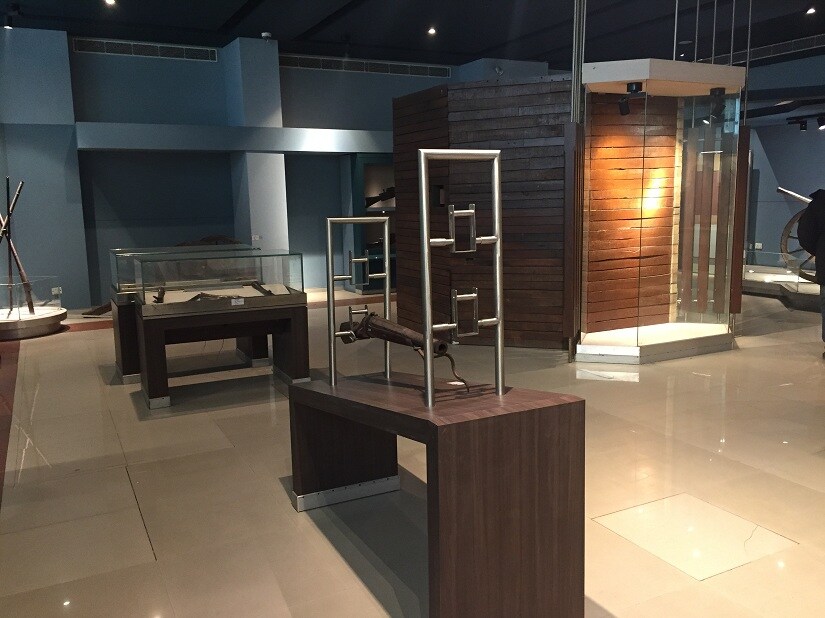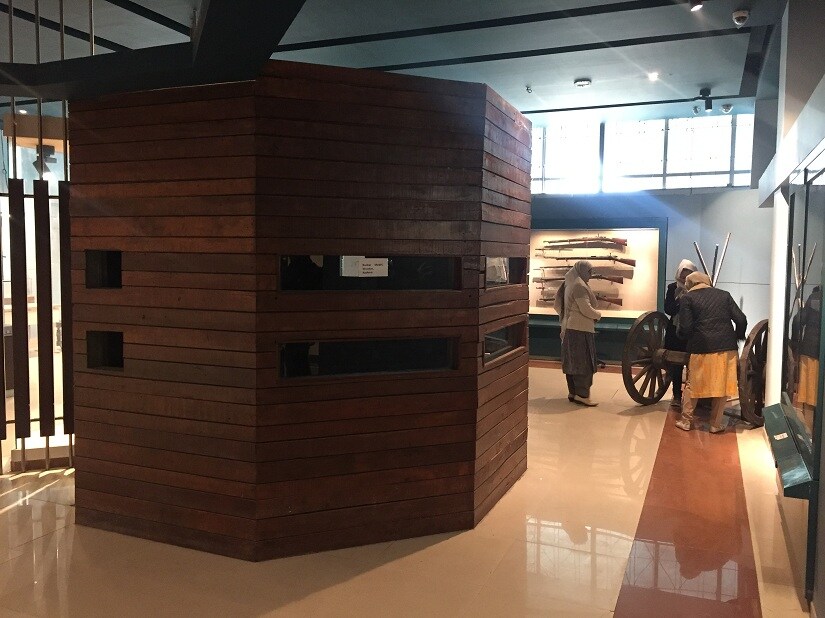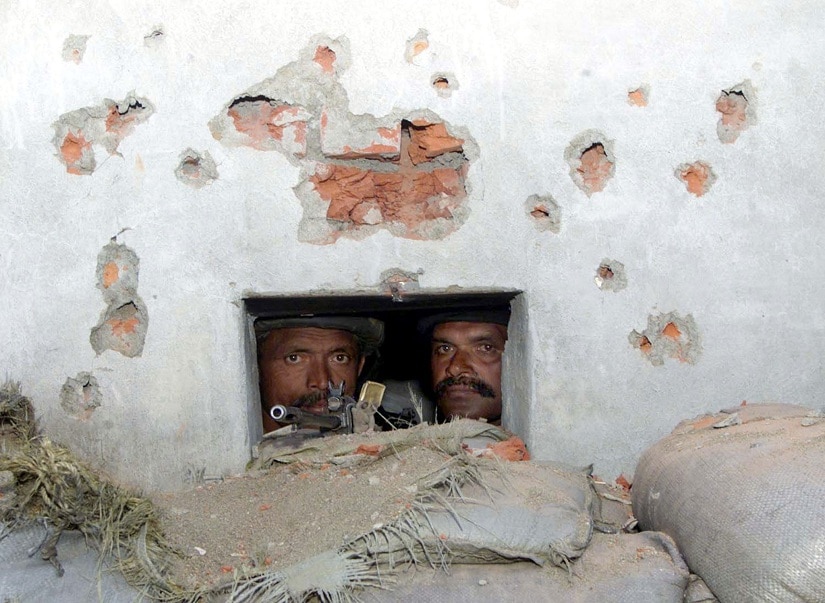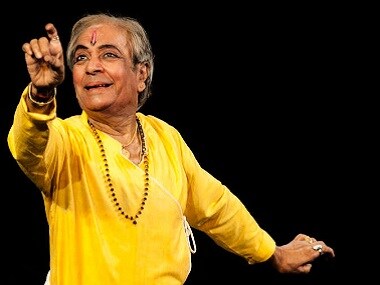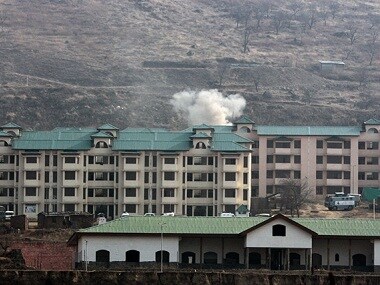The bunker, one of the most enduring symbols of the raging conflict in Kashmir, has now become a cultural objet.
The model of a bunker has been installed at the centre of the armaments section of the new building of the SPS Museum, established in 1896 during the Dogra monarchy, in Srinagar.
The bunker installation is an octagonal wooden cabin; strips of glass and square cutouts provide visitors a peek inside. If it were not for an A4-size computer printout that reads ‘Bunker Model/ Wooden/ Kashmir’, one would mistake it for an office cubicle.
Overlooking the bunker model from display cases are Dogra-era daggers, swords, knives, shields, a mace, rifles and pistols. A vintage machine gun and a small 18th century canon are the other objets in the armaments section of the museum, which is housed in a Dogra Maharaja’s summer guest house that suffered damages in the 2014 flood. Several artifacts are still to be shifted to the new building.
The word ‘model’ in the bunker’s description needs some explanation. For Muhammad Zahid, director — archives and museums, the ‘model’ simply means a model of the bunkers that have, like elsewhere, been an integral part of any place’s martial history.
“It shows continuity. Bunkers were present in the Mughal period. They are present today also,” said Zahid.
Probably underscoring this continuity, noted Kashmiri short story writer, the late Akhtar Mohiuddin, once told a writer, pointing to the medieval Afghan-era fort on the Haripart Hill, “This was the first bunker in Kashmir.”
However, the make of the “model bunker” at the museum has a contemporary resonance.
In 2002, when there was relative calm in the Valley — so much so that the then chief minister Mufti Muhammad Sayeed declared normalcy — the government decided to gradually remove the majority of the sand bunkers in the city and “beautify” those that had to stay.
Tourism authorities had told the government that the city’s landscape, dotted with sand bunkers, looked menacing to the tourists.
It was felt that it would be difficult to convince a potential tourist that Kashmir was safe for travel when bunkers — a sign of war — were everywhere. The customary olive green netting that covered a bunker, the razor wire that girded it and a machine gun barrel that protruded from a slit are hardly inspiring.
The government then decided to “beautify bunkers”, to meld them into the landscape. Thus, the ‘model bunker’ came into being.
To the sand bunkers was added a layer of wooden paneling from the outside. These bunkers started looking like a watchman’s cabin. At some places, which demanded bigger bunkers, bricks replaced sand bags. The ugly cousin of the ‘model bunker’ can still be seen at a few places, though.
The “model bunker” at the museum, said Zahid, is a work in progress. The other missing ingredients of a typical bunker will be added to it in the near future.
The idea of putting up a bunker in the armaments section was conceived during the consultations with a renowned firm, M/S Matrika Design Collaborative, Mumbai.
Once completed, the bunker diorama at the museum will mimic a typical Srinagar street of the '90s, only that the model bunker would be, aesthetically at least, not so repulsive.
When the insurgency erupted in 1990, the state apparatus had nearly collapsed. Gradually, however, the state started to assert its authority. The bunker was one such measure to reclaim the place that had nearly slipped out of control.
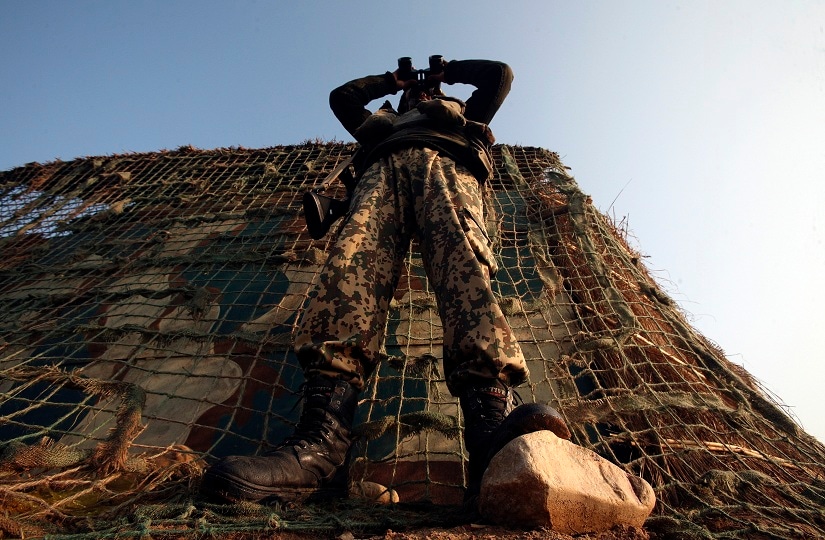
An Indian Border Security Force (BSF) soldier looks through a pair of binoculars outside a bunker. REUTERS/File Photo
No security agency has kept a count of how many bunkers were constructed during the early years of the militancy. But there were several hundred scattered across every nook and corner of the city.
To give you an idea about the density, there were four bunkers on the four corners of the bridge at Nawab Bazar, where I was born and brought up. One of these bunkers gradually overtook the uninhabited house of an affluent local family. Then there were two bunker-lings at the mouth of two small lanes of the mohalla. These were day posts. A single trooper manned each during the day before retreating into the biggest one at dusk. Over the years, only the biggest one, which had the house as a bonus, remained. It was finally dismantled about five years ago.
The bunkers had become training targets for new recruits or newly-arrived-from-Pakistan militants.
About 200 metres from the Nawab Bazar bunker cluster, there was one at Zaldagar. About the same distance, toward the right of the biggest Nawab Bazar bunker, there were two more on either side of the SMHS Hospital bridge. Then there was one at each of the four entrances to the hospital and Government Medical College complex.
This was, more or less, the case for every major mohalla in Srinagar.
Bunkers had become so integral to the life in the city, that they were new addresses. Even today, in Bemina, where I live currently, the ugly sand bags-and-net bunker outside a migrant Kashmiri Pandit’s house is cited more than the name of the residential colony, Gousia Colony, as a landmark. People say, 'Batte bunkaras nish' (near the ‘Pandit bunker’).
Published Date: Jan 06, 2018 13:07 PM | Updated Date: Jan 06, 2018 13:07 PM



